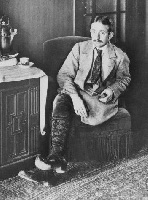Started in Germany out of fauvism as a way to use distortion and exaggeration to have a more emotional effect with the use of intense colors and bold brush strokes and outlines. Major Artists in this movement were Wassily Kandinsky and Ernest Ludwig Kirchner
ARTISTS
EVENTS & EXHIBITIONS
Der Blaue Reiter
1911-1914
Der Blaue Reiter was an expressionist art movement that originated in Germany in 1911. It was founded by Wassily Kandinsky, Franz Marc, Paul Klee, and other artists after one of Kandinsky’s paintings, “Last Judgment,” was rejected by an exhibition. Stylistically, the group's work varied from artist to artist, but they all sought to express spiritual truth by the symbolic use of color, and a spontaneous approach to creating art. Der Blaue Reiter was suspicious of modern, industrial society, much like Die Brucke. However, instead of drawing on modern life for images to critique, Blaue Reiter looked to the past and to nature for its imagery, particularly within folk culture and medieval life.
Degenerate Art Exhibition
1937-1937
Degenerate Art was the term used by Nazi's during the Nazi Regime referring to almost all modern art. This exhibition featured 650 paintings, prints, sculptures, and books that were deemed especially offensive, taken from 32 museums and galleries from all over Germany . Artists such as Emile Nolde, Ernst Ludwig Kirchner, James Ensor, Henri Matisse, Vincent van Gogh, and Pablo Picasso among many others were represented and displayed for the mockery of the Nazi's. At the end of four months the show had attracted over two million visitors, and ironically more than a coinciding show featuring ideal German art.
Color Photography
1907-1907
This was the first time a quality Autochrome color plate was perfected by Auguste and Louis Lumiere. Autochrome was a process used before they invented color film.











